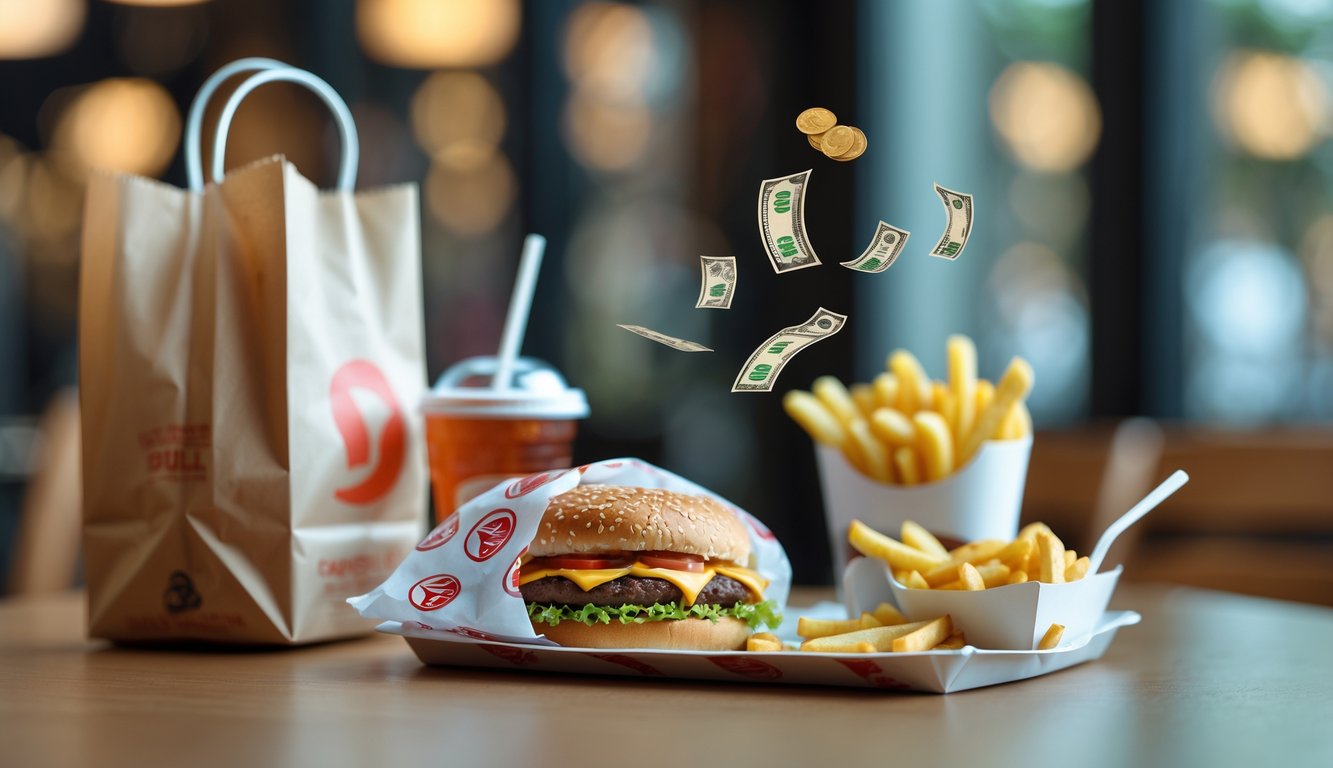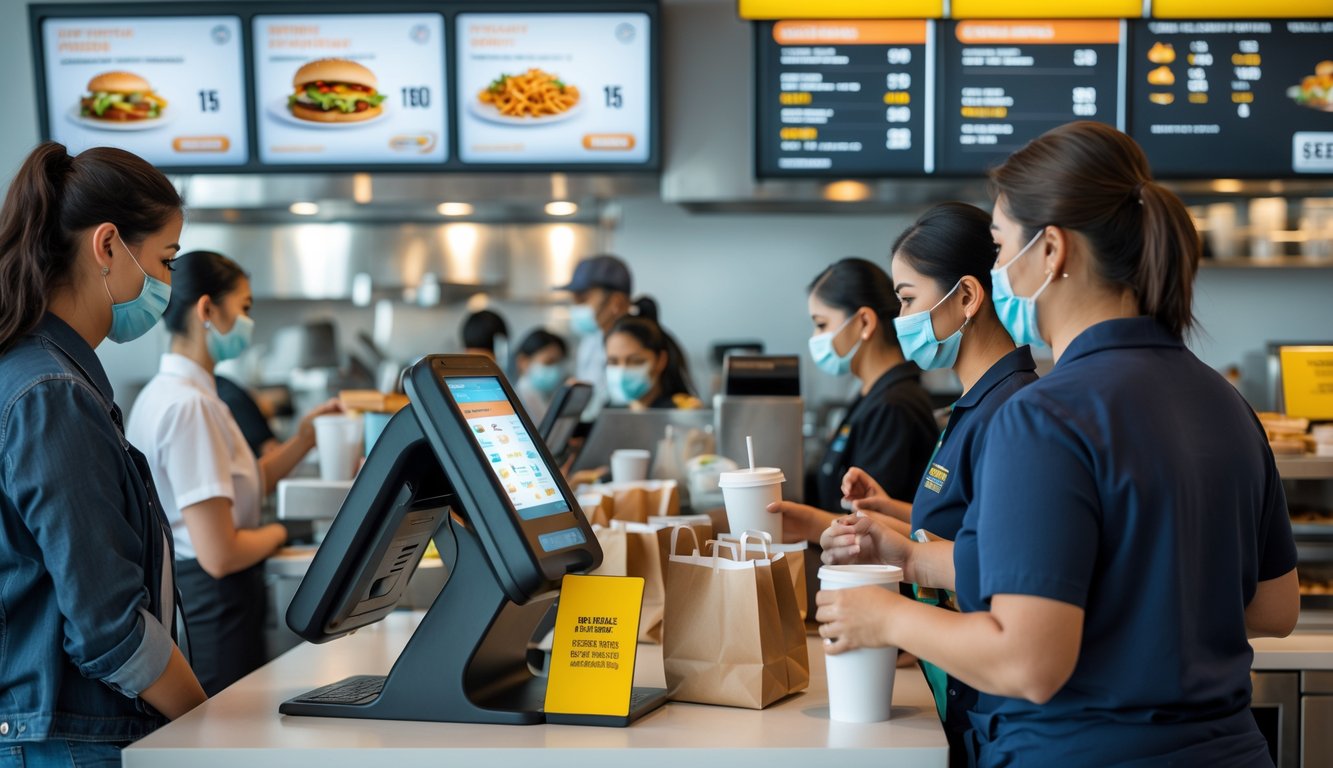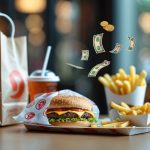
Marketing Tactics That Mask Costs
Chains roll out “value meals” with tiny print disclaimers, and I guess that’s supposed to be transparency? Not really. I’ve had marketing clients admit most of these tricks are just to make you feel like you’re getting a deal. USDA says 58.5% of Americans’ 2023 food budgets went to eating out. It’s not just hunger. It’s almost like we’ve been trained to expect this.
Advertising and Perceived Value
Those splashy 99-cent add-ons and “limited time” banners? Still drives me up the wall. Does it matter if the sandwich is thirty cents less when the sides cost more? I asked a friend in advertising if they ever thought people would stop for menu math—he laughed.
Fast food ads brag about savings with giant burger photos, but try to order just the item or customize and watch the price jump. The charm pricing—.99, .95, just under a dollar—apparently tricks us into thinking we’re spending less. A behavioral economist I trust said people underestimate their total by about 10% when prices end in 9. The “bonus fries” for upsizing? Pure FOMO. I mean, most studies don’t even pretend otherwise.
Special Deals That Aren’t Always Deals
“Buy one, get one” combos—yeah, I fall for those. Every time. But if you actually price out the items (looking at you, Whopper Meal), sometimes you’re paying more than if you went a la carte. I dug into kiosk data and, no joke, kiosk orders are 10% higher on average than counter ones.
Bundled drinks? Soda costs them pennies but adds $2 to the combo. Special “family meals” with toys? My kid won’t remember the nuggets, but the toy is just an ad for next time. Nothing wrong with fun, but these campaigns make takeout budgeting a mess. Reading the fine print or breaking out a calculator feels like fighting the whole marketing system—sometimes I just give up and eat the cost.
The Role of Convenience and Technology

Once you’re stuck in the fast food convenience loop, it’s not just about speed. There’s this sneaky flow of money—real, actual dollars—hiding in the “please don’t make me wait” world of drive-thrus and self-serve screens. Nobody talks about how often you end up paying more for menu upsells or tech “efficiency.” Half the time, I can’t even remember what I ordered, but my bank statement definitely does.
Drive-Through and Its Premiums
Drive-throughs. I mean, they used to feel like a novelty, right? Now it’s just a conveyor belt for wallets. Supposedly, they’re all about “saving time”—yeah, I saw that National Restaurant Association stat: over 60% of fast food orders go through the window. But is it really about time? It’s about squeezing out extra cash. I keep seeing the same combo cost more at the drive-through than inside. Not a massive difference, just enough to bug me—thirty cents here, a weird “location convenience fee” there. Nobody ever spells that out, of course.
Once, I asked a manager about it—he looked straight at me and just said, “Peak hour? We pad it for volume and complexity.” Not even subtle. They use digital payments to play with prices on the fly, sliding a few extra cents into the total when nobody’s looking. And then there’s the loyalty app: “bundle and save!” Except, the more you “upgrade,” the less value you actually get. I barely notice it in the moment, but my bank statement sure does.
Self-Serve Kiosks Impact on Pricing
Those kiosks. Ugh. I’m standing there, poking at a greasy screen, no human in sight, and suddenly I’m being upsold on cheese for sixty cents. Would I say yes if a real person asked? Doubt it. I’ve read that 32% of people are more willing to pay via app than with cash (KPMG, 2015), but nobody talks about how these things basically trick you into spending more. The software’s always shoving premium options in my face. I get it—higher-margin items, limited-time offers, whatever, but it’s so easy to just tap “yes” and move on.
Kiosks love to default to the pricier meal combos. Blink and you’ll miss some random “convenience fee” or digital service charge. Most people blow right past it. Does anyone talk about how weirdly manipulative this is? Maybe somewhere, but every time I use one, I feel like the machine’s reading my mind and my hunger.



